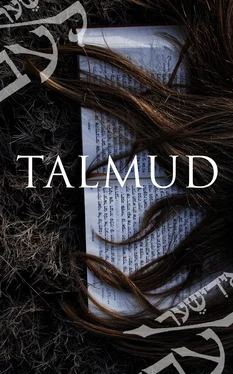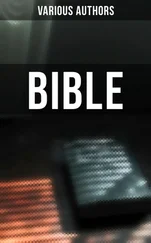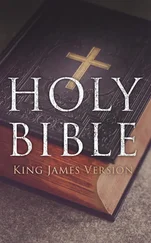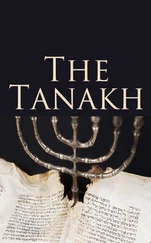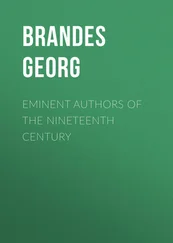c1MISHNA c . With every sacrifice that was offered, wine and meal p. 23 were brought in accordance with the biblical commandment to that effect, and in quantities prescribed by the ordinances. As the drink and meal offerings were bought in the Temple, the person bringing the sacrifice would receive a seal from the priest which he would exchange for the necessary quantity of wine and meal. The drink-offerings with goats and sheep were the same, hence the seal inscribed "kid" served for both. One 'who brought a ram, however, which required a larger quantity of wine and meal, would receive a separate seal, inscribed "ram." As for offerings of the herds, they were all equal, small or large, male or female; hence the seal inscribed "calf" sufficed for all. Those who were afflicted with sores, and had to bring two rams and one sheep, received a seal inscribed "sin" (which had the hidden purpose of signifying that sores were the consequence of sin). The poor sinners, who had only to bring one sheep, two doves, and one-tenth of an ephah of meal and one lug of oil, without any wine, were, according to the opinion of the sages, not in need of a seal, because the seal inscribed "kid," which they received when bringing the sheep, was sufficient for the other purpose. Ben Azai, however, says, that another seal was necessary, and that an extra seal marked "poor sinner" was given, which was intended as a sign that no wine was necessary. The tradition of Ben Azai, that the seals were inscribed in Aramaic characters, is also true, because, prior to the introduction of the Greek language, all the writing in the Temple was done in Aramaic. (See the mentioned work of Büchler.)
e1MISHNA e . Providing only the surplus amounted to exactly the amount paid for the seal.
f1MISHNA f . In the Palestinian Talmud in this chapter (Halakha 25), many legends are related illustrating this Mishna.
Table of Contents
MISHNA: ( a ) There were thirteen curved chests a1and thirteen tables in the Sanctuary, and thirteen prostrations took place in the Sanctuary. The family of R. Gamaliel and of R. Hananiah, chief of the priests, made fourteen prostrations; this extra prostration was made towards the wood-chamber, a2because, according to an ancestral tradition, the ark was hidden there.
( b ) Once a priest b1was engaged there, and he noticed that one of the paving-stones on one place appeared different from the others. He went out to tell others of it; but he had not yet finished speaking, when he gave up the ghost; thereby it was known to a certainty that the ark of the covenant b2was hidden there.
( c ) In what direction were the prostrations made? Four towards the north, four towards the south, three towards the east, and two towards the occident; i.e. , towards the thirteen gates. c1The southern gates were near a corner of the western. These were: The upper gate, the fire gate, the firstling gate, and the water gate. Why is it called water gate? Because a glass of water was carried through it for the sprinkling of the altar on the Feast of Booths. R. Eliezer son of Jacob says: At that gate the waters (flowing from the Holy of Holies) commence to flow rapidly downwards, until they again flow out under the threshold of the Temple. Opposite there were the northern gates, near the other corner of the western. These were: The door of Jekhaniah, the gate of sacrifice, the women's gate, and the music-gate; and why is the first one called the gate of Jekhaniah? Because Jekhaniah went through it, when he went into exile. In the east was the gate Nikanur, which also had two small doors, c2one to the right and the other to the left; lastly, there were two in the west, which were nameless.
( d ) Thirteen tables were in the Sanctuary: Eight marble ones in the slaughter-house, on which the entrails were washed. Two to the west of the altar-sheep, one marble and one silver: on the marble one the sacrificial pieces were placed, and on the silver table the utensils were placed. Two in the corridor on the inside of the Temple entrance, a marble table and a golden one: on the marble one the showbreads were placed at the time they were brought in, and on the golden one when they were taken out; because the principle is, that the veneration of the sacred must be heightened and not lessened. d1Lastly, there was one golden table in the Temple itself, upon which the showbreads were constantly lying.
(e) Thirteen curved chests were in the Sanctuary. e1On them was written: Old shekalim, new shekalim, bird-offerings, doves for whole-offerings, wood, incense, gold for the cover of the Holy of Holies. Six were for donations in general. e2The term new shekalim is used for those paid annually. Old shekalim were those which were paid by men who had failed to pay them in the year when they were due, and paid them in the following year. "In those marked 'bird-offerings,' the money for turtle-doves was deposited; in those marked 'doves,' money for young doves was deposited: but they were all whole-offerings." So says R. Jehudah. The sages say: "In the former, money for both sin-offerings and whole-offerings was placed, and in the latter only for whole-offerings." e3( f ) If one vow, "I will furnish wood for the altar," he must not furnish less than two cords. If one vow (to furnish) incense, he must not furnish less than a handful. If one vow (to furnish) gold coin, he must not furnish less than a Dinar. f1Six (chests) were for voluntary offerings. What was done with these? Whole-offerings were bought for these, the meat of which was sacrificed to God, but the hides belonged to the priests. f2The following explanation was made by Jehoiada the high priest, of the expression [Lev. v. 19]: "It is a trespass-offering; be hath, in trespassing, trespassed against the Lord": The rule is: With everything coming in under the name of sin or guilt offering, whole-offerings arc bought, the meat of which is offered up to God and the hides of which belong to the priests; hence the two expressions: A guilt-offering for God and a guilt-offering for the priests, as it is written [II Kings xii. 16]: "The money for trespass-offerings and the money for sin-offerings was not brought into the house of the Lord: it belonged to the priests."
Footnotes
a1MISHNA a . The thirteen chests were used as explained in Mishna e , and they were shaped like horns, so that a hand could not be inserted from the top. This Mishna places the number of everything at thirteen (on account of the thirteen kinds of mercy attributed to God). R. Ishmael composed the thirteen rules with which the Law is expounded.
a2The location of the wood-chamber can be determined in Tract Midoth.
b1MISHNA b . The priest was a man of blemish (deformed), and could not take part in the sacrifices, but was allowed to select and peel the wood used at the altar.
b2The ark was hidden during the existence of the first Temple in order to save it from the Babylonians, after all hope had been abandoned, and its hiding-place was underground. The priests who subsequently took charge probably noticed some sign made by the former generation when the ark was hidden, and this particular priest died as a consequence of his attempt to reveal the secret.
c1MISHNA c . That there were thirteen gates in the Temple is vouched for by Abba Jose ben Johanan; but the sages declare, that there were only seven gates and that the thirteen prostrations were made in the direction of the twelve breaches made by the Greeks in the walls of the Temple at the time of the Maccabees, and towards the altar; the twelve breaches had been repaired, and each prostration was a mark of gratitude for the good fortune. From the fact, however, that the Mishna cites nine of the gates by their names and describes their location, it seems that Abba Jose ben Johanan was correct, and had his knowledge of the matter from tradition.
Читать дальше
